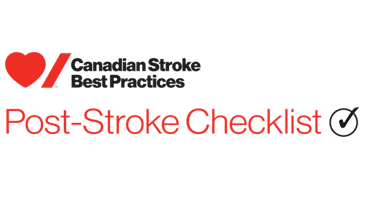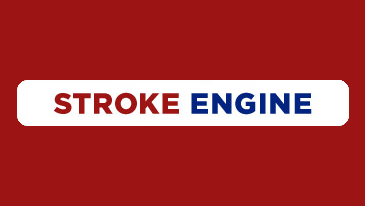- Definition and Considerations
- 1. Supporting People with Stroke, Their Families and Caregivers
- 2. Education for People with Stroke, Their Families and Caregivers
- 3. Interprofessional Care Planning and Communication
-
4. Community Participation Following Stroke
- Recommendations
- 4.1 Physical and Psychological Health Management Following Stroke
- 4.2 Functional Health Management
- 4.3 Participation in Social and Life Roles Following Stroke: Driving
- 4.4 Participation in Social and Life Roles Following Stroke: Vocational Roles
- 4.5 Participation in Social and Life Roles Following Stroke: Leisure Activities and Social Participation
- 4.6 Participation in Social and Life Roles Following Stroke: Relationships and Sexuality
- 4.7 Participation in Social and Life Roles Following Stroke: Disability Supports in the Community
- 4.8 Participation in Advance Care Plans
- 4.9 Participation in Community-Based Palliative Care
- 5. Transition to Long-Term Care Following a Stroke
- 6. Post Stroke Depression
- 7. Post-Stroke Fatigue
Recommendations
NOTE: The topics covered in this section include elements of active rehabilitation as well as community and participation. They are presented within Part Two: Transitions and Community Participation Following Stroke to consolidate them in one place and present a comprehensive set of recommendations.
4.0 People with stroke, their families, and caregivers should be provided with information, education, training, support and access to services throughout transitions to the community to optimize the return to life roles, activities and social participation [Evidence Level B].
4.1 Physical and Psychological Health Management Following Stroke
- People living in the community post- stroke should have access to regular and ongoing medical follow-up appropriate to their individual needs, which may address: evaluating progress of recovery, preventing deterioration, maximizing functional and psychosocial outcomes, preventing stroke recurrence, and improving quality of life [Evidence Level B].
- Initial review with the primary care provider would ideally occur within the first month following hospital discharge and address the key secondary prevention, medical and functional issues, and provide ongoing follow-up as required. [Evidence Level C]. Refer to CSBPR Secondary Prevention of Stroke module for additional information and the post-stroke checklist.
- People with stroke should be screened and treated for new and/or ongoing cognitive concerns, mental health issues (i.e., depression, anxiety), and psychosocial issues as required [Evidence Level B]. Refer to CSBPR Mood, Cognition & Fatigue following Stroke module for additional information.
- Secondary prevention of stroke should be optimally managed and risk factor reduction strategies optimized in all settings including long term care [Evidence Level A]. Refer to CSBPR Secondary Prevention of Stroke module for additional information
- Referrals to stroke prevention clinics and services could be initiated where appropriate (i.e., at hospital discharge and once back in the community) [Evidence Level C]. Refer to CSBPR Secondary Prevention of Stroke module for additional information
4.2 Functional Health Management
- People with stroke living in the community who experience a decline in functional status should receive targeted interventions, as appropriate [Evidence Level B], even if the decline occurs many months/years post-stroke. Refer to CSBPR Stroke Rehabilitation and Recovery following Stroke module for targeted interventions.
- Processes should be in place for people following a stroke to re-access rehabilitation or mental health services if required during longer-term recovery [Evidence Level B]. Refer to CSBPR Stroke Rehabilitation and Recovery following Stroke module and CSBPR Mood, Cognition and Fatigue Following Stroke module for additional information.
- People with stroke should be encouraged to participate in evidence-based community exercise programs as appropriate [Evidence Level A].
4.3 Participation in Social and Life Roles Following Stroke: Driving
A. Education and Screening:
- People should be advised to stop driving for at least one month after a stroke, in accordance with the Canadian Council of Motor Transport Administrators (CCMTA) Medical Standards for Drivers [Evidence Level B].
- The person with stroke should be made aware whether the local licencing authority has been informed that they have had a change in their medical status that will affect their ability to drive [Evidence Level C].
- People who have had one or multiple TIAs should be instructed to stop driving until a comprehensive neurological assessment (including sensorimotor function and cognitive ability) shows no residual loss of functional ability and discloses no obvious risk of sudden recurrence that could create a hazard while driving, in accordance with the Canadian Council of Motor Transport Administrators (CCMTA) Medical Standards for Drivers [Evidence Level C].
- As well, any underlying cause of stroke has been addressed with appropriate treatment [Evidence Level C].
*Refer to individual provincial and territorial laws for requirements for reporting a person’s fitness to drive to driving authorities, and requirements to return to driving.
- As well, any underlying cause of stroke has been addressed with appropriate treatment [Evidence Level C].
- People with stroke may be screened for their interest in returning to driving at transitions and follow-up visits [Evidence Level C].
B. Assessment for Fitness to Drive:
- People interested in returning to driving following a stroke should be assessed for driving abilities and rehabilitation needs using valid and reliable methods for any residual functional, sensory-perceptual, motor, or cognitive impairments [Evidence Level B] in accordance with provincial-territorial criteria for return to driving.
- Sensory-perceptual assessment should focus on vision, visual fields, and visual attention;
- Motor assessment should focus on strength, range of motion, coordination and reaction time;
- Cognitive assessment should focus on problem solving, speed of decision making, judgment and reading/symbol comprehension.
-
For people who have residual neurological deficits impacting driving ability following stroke, a full comprehensive driving evaluation, including a government-sanctioned on-road assessment, should be considered to determine fitness to drive [Evidence Level B].
- People with stroke may be referred to training programs, such as simulator-based training, to help prepare for return to driving [Evidence Level B].
C. Rehabilitation and Management for Return to Driving:
- Following a stroke, people who are functionally able and interested in returning to driving should be offered appropriate rehabilitation therapies as individually required to address functional, perceptual and cognitive issues and increase the likelihood of being able to return to driving [Evidence Level B].
- Persons unable to return to driving may be informed about and assisted to access transportation alternatives [Evidence Level C].
- Persons unable to return to driving may be offered support and/or counselling on coping with the loss of the ability to drive [Evidence Level C].
4.4 Participation in Social and Life Roles Following Stroke: Vocational Roles
- Following stroke, people may be considered for assessment of vocational interests (i.e., work, school, volunteering) and for their potential to return to their vocations [Evidence Level C].
- This initial screening may take place early in the rehabilitation phase and should be reassessed at transitions as appropriate [Evidence Level C].
- Findings can be included as part of the person’s individualized goal setting and planning for early and ongoing rehabilitation [Evidence Level C].
- Encourage resumption of vocational interests where possible. A gradual resumption could occur when appropriate [Evidence Level C].
- Initiation of referrals and or counselling may be considered as appropriate (such as to vocational services) to assist with re-engagement in vocational activities as part of transitions to the community [Evidence Level C].
- A detailed cognitive assessment including a neuropsychological evaluation or occupational therapy evaluation, where appropriate and available, can be considered to assist with determining the person’s ability to meet the needs of their current or potential employment requirements and contribute to vocational planning [Evidence Level C].
- Referral to vocational rehabilitation services may be considered, as appropriate [Evidence Level C].
- A designated member of the care team may provide counseling and information on employment benefits and legal rights to people who have had a stroke [Evidence Level C].
- Review financial concerns, sustainability and benefit options during admission and/or prior to discharge, and later in follow-up assessments and transitions. [Evidence Level C].
- With consent and where possible, the healthcare team may work with employers/educators to devise an appropriate return to work/school plan [Evidence Level C].
- Encourage employers and education providers to follow therapists’ recommendations with regards to work/school modifications and provide the flexibility to allow a return to work/school at an appropriate pace [Evidence Level C].
4.5 Participation in Social and Life Roles Following Stroke: Leisure Activities and Social Participation
- Following stroke, people should be screened for pre-stroke and current leisure goals, interests and social participation [Evidence Level B]
- A comprehensive multi-dimensional assessment for skills and abilities to resume previous or new leisure and social activities should be performed. [Evidence Level B]
- People with stroke who experience difficulty engaging in leisure and other social activities should receive targeted therapeutic interventions and individualized plans for participation based on collaborative goal-setting with their healthcare team [Evidence Level A].
- People with stroke may ideally be provided with information and/or referral to community-based resources for engagement and self-management for ongoing physical, social, emotional, intellectual and spiritual activities and participation in the community [Evidence Level C].
4.6 Participation in Social and Life Roles Following Stroke: Relationships and Sexuality
- People with stroke, their family and caregivers should be educated and counselled on the potential impact of stroke on relationships [Evidence Level B].
- Following stroke people should be given the opportunity to discuss intimacy, sexuality and sexual functioning with their healthcare provider [Evidence Level B].
- Topics to address in discussions may include safety concerns, changes in libido, physical limitations resulting from stroke, and emotional consequences of stroke [Evidence Level B].
- Consider initiating discussions prior to inpatient discharge and as the person transitions back into the community [Evidence Level C].
- Consider providing verbal and written information adapted according to a person’s cognitive or communication abilities or deficits [Evidence Level C].
- Education sessions for people with stroke and/or partners may address expected changes in intimacy and sexuality, strategies to maximize sexual function, and frequently asked questions regarding relationships following a stroke [Evidence Level C].
- Referral to a sexual health specialist can be considered for people with persistent sexual dysfunction. [Evidence Level C].
- Medical practitioners may discuss use and contraindications of medications to address sexual dysfunction [Evidence Level C].
4.7 Participation in Social and Life Roles Following Stroke: Disability Supports in the Community
- Healthcare professionals across settings may provide people with stroke, their families and caregivers with information and linkages regarding access to disability support services within their region [Evidence Level C].
- Healthcare team members, people with stroke, their families, and caregivers should work together to develop an accessibility plan prior to transition to a home or community-based living setting [Evidence Level C].
- This plan should consider the person’s physical function, communication, emotional, cognitive and/or perceptual abilities and impairments following stroke.
- Disability legislation and guidelines may be explained to people with stroke, family members and caregivers, by designated healthcare providers in preparation for transitions [Evidence level C].
- Timely completion of appropriate documentation and applications by healthcare team members as required in collaboration with people with stroke, their families and caregivers can help to minimize delays with accessing eligible services [Evidence level C].
- Collaboration between designated members of the healthcare team and persons with stroke, families and caregivers can help navigate systems and ensure appropriate services and equipment are accessed in a timely manner [Evidence Level C].
- Healthcare team members, people with stroke, their families, and caregivers should work together to develop an accessibility plan prior to transition to a home or community-based living setting [Evidence Level C].
4.8 Participation in Advance Care Plans
- The healthcare team should ensure that person’s goals of care and advance care planning decisions are reviewed periodically with the person with stroke, their family and caregivers (as appropriate), and updated if needed, such as when there is a change in health status [Evidence Level B]. Refer to CSBPR Acute Stroke Management Module Section 10 for additional information.
- Advance care planning may include a substitute decision-maker (proxy or agent) and should reflect provincial legislation [Evidence Level C].
- Advance care planning discussions should be documented and reassessed regularly, including at transition points or when there is a change in status, with the active care team and the person with stroke or substitute decision-maker and included on the transition (discharge) summary [Evidence Level C].
- Respectful discussion of values and wishes should be balanced with information regarding medically appropriate treatment related to ongoing stroke management, prognosis and future medical care [Evidence Level C]. Refer to CSBPR Acute Stroke Management Module Section 10 for additional information.
4.9 Participation in Community-Based Palliative Care
- Referral and liaison with community-based hospice or palliative care services can be coordinated as appropriate based on the person’s goals of care and condition [Evidence Level C]. Refer to CSBPR Acute Stroke Management module Section 11 for additional information.
- The needs of people with stroke, their families and caregivers, including physical, spiritual, cultural, psychological, ethical, and social aspects may be addressed using appropriate communication skills [Evidence Level C].
The post-discharge period is consistently reported by people with stroke and their families as a stressful and challenging time as they adjust to new roles and potentially altered functional and cognitive abilities. Participation in life roles and meaningful activity positively contributes to overall sense of wellbeing and purpose. These range from being able to drive again to relationships and intimacy, and re-engaging in leisure and social activities.
People with stroke and their families often lose the social, emotional, and practical support offered by an inpatient stroke service. They have expressed how they would have found a follow-up visit after returning home to be beneficial. They describe difficulties with access services and resources once they are back in the community. Evidence shows that when there is coordination of care beyond the inpatient setting and community support services are provided, outcomes and satisfaction improve. People have a strong desire to regain control and independence, and health systems and services should be designed to support these positive outcomes.
The addition of recommendations for long term care are a response to data showing that people with stroke are among the largest population receiving long-term care, and their number is steadily increasing worldwide. People with stroke who transition to long-term care should continue to have rehabilitation and recovery goals and plans that focus on restorative care, maintenance of function, and support for health declines, and be cared for by staff knowledgeable in stroke to maximize outcome goals.
Following stroke, successful transitions and community participation requires:
- Education and training in shared decision-making skills and strategies for all healthcare professionals, persons with stroke, families, and caregivers.
- Adequate and timely follow-up stroke care in all provinces and territories to support community participation.
- Assistance for people with stroke, their families, and caregivers with an evolving care plan and regular follow-up assessments.
- Coordination between primary care provider and community agencies for referral to appropriate programs and services for assessment of ability to resume driving.
- Access to appropriate (public) transportation that supports people with disabilities.
- Programs that support timely and affordable access to mobility and other assistive devices for people with stroke.
- Healthcare professionals and caregivers in the community and long-term care settings with stroke care expertise and access to ongoing education.
- Ongoing support in the form of community programs, respite care, and educational opportunities available to support caregivers who are balancing personal needs with caregiving responsibilities.
- Strategies to assist stroke survivors to maintain, enhance, and develop appropriate social support, and to re-engage in desired vocational, social, and recreational activities.
- Information regarding community resources and processes to access these resources provided to all people with stroke and their family members and caregivers.
- Health professionals should advocate to ensure that feasible alternatives to driving are available in the community.
Clinical and Health System Performance Measures:
- Proportion of people with stroke who are discharged from acute care who receive a referral for home care or community supportive services.
- Proportion of readmissions to acute care for stroke-related causes following discharge to the community, stratified by type of stroke.
- Proportion of people with stroke who return to the emergency department or hospital setting for non-physical issues following stroke (e.g., failure to cope).
- Number of persons with stroke with documentation that information was given to them or their family on formal and informal educational programs, care after stroke, available services, process to access available services, and services covered by health insurance.
- Documentation of shared and collaborative decision-making between healthcare professionals and persons with stroke regarding individualized transition plans.
- Number of people with stroke referred to a secondary prevention team by the rehabilitation team.
- Number of visits to primary care within specified time frames for stroke-related issues.
- Number of visits to an emergency department within specified time frames.
- Percentage of people with stroke who return home following stroke rehabilitation who require community health services (e.g., home care or respite care).
- Length of time from hospital discharge (whether from acute care or inpatient rehabilitation) to initiation of community health services.
- Frequency and duration of community health services, stratified by the type of service provided.
- Number of readmissions from stroke rehabilitation to acute care for stroke-related causes.
- Percentage of people with stroke who return to the community from acute hospital stay or following an inpatient rehabilitation stay who require admission to long-term care or a nursing home within six months or one year.
- Median wait time from referral to admission to nursing home, complex continuing care or long-term care facility.
- Documentation to indicate that assessment of fitness to drive and related counseling was performed.
- Number of people with stroke referred for driving assessment by occupational therapist in the community.
Person-Oriented Measures (PREMS, PROMS)
- Measure of burden of care for family and caregivers living in the community.
- Changes in quality of life measured at regular intervals during recovery and participation, and reassessed when changes in health status or other life events occur (e.g., at 60, 90- and 180-days following stroke).
Measurement Notes
- Performance measure 1: data may be obtained from inpatient chart documentation or community support services documentation. Informal education or education received by primary care providers may be difficult to track unless specific audit tools are developed and implemented in local areas. Also refer to some of the performance measures listed in recommendation 2.1.
- Emergency department visits can be tracked through the Canadian Institute for Health Information database for participating institutions or hospital records if the person with stroke returns to the emergency department of the hospital where inpatient stay occurred.
- The Canadian Institute for Health Information holds an administrative data set for complex continuing care and long-term care, which uses a minimal data set that is mandated in several regions across Canada. This data set uses the Resident Assessment Instrument tool for assessing functional status. At this time there are no validated comparison models between the Functional Impact Measure and the Resident Assessment Instrument.
- Hospital readmissions from inpatient rehabilitation to acute care can be obtained from hospital administrative data nationally and provincially.
- Visits to primary care and indicators related to information and education are difficult to measure. They could be obtained through surveys and standardized audit tools at the local or regional level.
Health Care Provider Information
- CSBPR Virtual Healthcare Tookit
- Table 1: Tools to Assess Participation and Health-Related Quality of Life
- Table 3: Assessment Tools for Pre-Driving Screening and Research Correlating Tools with Driving Risk
- Taking Action for Optimal Community and Long-Term Stroke Care: A resource for healthcare providers
- The Functional Independence Measure (FIM®)
- The Chedoke-McMaster Stroke Assessment
- The Craig Handicap Assessment and Reporting Technique (CHART)
- The Community Integration Measure
- Transitions between hospital and home (Quality Standards from Health Quality Ontario)
Resources for People with Stroke, Families and Caregivers
- Taking charge of your stroke recovery: Rehabilitation and recovery infographic
- Taking charge of your stroke recovery: Transitions and community participation infographic
- Your Stroke Journey: A guide for people living with stroke
- Post-Stroke Checklist
- Heart & Stroke Services and Resources Directory
- A Family Guide to Pediatric Stroke
- Canadian Partnership for Stroke Recovery Patient Resources
- Stroke Engine
- Transitions between hospital and home (Patient Guide from Health Quality Ontario)
- Taking charge of your stroke recovery: 2020 Virtual healthcare checklist infographic
Evidence Table and Reference List
The post-discharge period is a difficult time of adjustment for both patients and their families, as they return to vocational and social life roles. For persons returning home, the transition period may be challenging as the social, emotional, and practical support offered by inpatient care is lost.
Return to Work
Return to work (RTW) is one of the most important issues for those who were working at the time of their stroke. Following stroke, the reported rates of RTW vary widely. Using the results from 29 studies, Edwards et al. (2017) reported that the overall frequency of return to either full or part-time work, assessed up to 12 years following stroke ranged from 7.3%1-74.5%. Up to 6 months following stroke, 41% of persons had returned to work, increasing to 66% at 4-6 years. Hackett et al. (2012) reported that 75% of persons previously employed at the time of stroke had returned to work at one year. Hannerz et al. (2011) reported that of 19,985 persons included in the Danish Occupational Hospitalization Register who were 20-57 years and had sustained a stroke, 62.1% were employed 2 years post stroke. At 4 years following stroke, Trygged et al. (2011) reported that 4,867 (69%) of 7,081 Swedes who had been employed prior to stroke, aged 40-59 years had successfully returned to work. The most commonly-cited predictors of successful RTW include independence in activities of daily living (ADLs), younger age, milder stroke severity higher cognitive functioning, fewer neurological deficits, strong family support, having realistic and flexible vocational goals, higher income and education, havng a white-collar job and being male (Edwards et al. 2017, Wang et al. 2014, Hannerz et al. 2011), while hemorrhagic stroke, increasing age and stroke severity, and depression, have been citing as factors associated with a decreasing probability of RTW Wang et al. 2014, Hannerz et al. 2011).
Interventions to help improve the odds of successful RTW have not been well studied. Ntsiea et al. (2015) reported that a 6-week individualized workplace intervention program group was associated with an increase in the number of persons who had returned to work following a recent stroke (<8 weeks), compared with persons receiving usual care, at 6 months (60% vs. 20%, p<0.001). Baldwin & Brusco (2011) included the results from 6 studies, which examined rehabilitation programs that included vocational training post stroke. Vocational rehabilitation programs were defined as those that included medical, psychological, social, physical and/or occupational rehabilitation activities with the purpose to return to work. Following completion of the programs, the RTW rates varied among the studies from 12% to 49%. The pre-stroke vocation status was reported in 3 studies and ranged from 48% to 100%.
Leisure Activity
Many people recovering from stroke are unable to resume their previous leisure activities. Factors including physical limitations, attributable to residual disability, decreased motivation, environmental barriers including transportation and affordability have been cited as reasons for decreased participation.
A variety of programs and interventions have been evaluated to help improve participation following stroke, although few have used an assessment of leisure as the primary outcome. A systematic review by Dorstyn et al (2014) including the results from 8 RCTs that examined the benefit of a community-based intervention focusing on leisure therapy, leisure therapy + physical activity or leisure education, which provided an average of 17 sessions over 23 weeks. The majority of participants had experienced a mild or moderately-disabling stroke within the previous year. While no pooled analyses were conducted, within individual trials significant improvement was noted at the end of treatment on measures of quality of fife, mood and satisfaction with leisure activity. An 8-week peer-volunteer facilitated exercise and education program was associated with significantly greater improvement in median perceived Subjective Index of Physical and Social Outcome (physical component) scores at both at the end of treatment and at one year, compared with participants who received standard care (Harrington et al. 2010). Desrosiers et al. (2007) included 62 participants residing in the community with a history of stroke within the previous 5 years and who were experiencing some limitations in leisure participation or satisfaction. The intervention involved 8-12, 60-minute, weekly education sessions, while participants in the control groups received home visits from a recreational therapist following the same schedule as the intervention group. At the completion of the study, participants in the intervention group reported significantly more time spent in active leisure activities (MD=14.0 minutes, 95% CI 3.2-24.9, p=0.01) and involvement in a greater number of different activities (MD= 2.9, 95% CI 1.1-4.8, p=0.002). Participants in the intervention group had also gained significantly more points on the Leisure Satisfaction Scale (MD= 11.9, 95% CI 4.2-19.5, p=0.003) and in the satisfaction of leisure needs and expectations (MD=6.9, 95% CI 1.3-12.6, p=0.02).
Sexuality
Reports of sexual dysfunction following stroke are common. Among several surveys including small samples, declines in sexual activity have been reported. Stein et al. (2013) surveyed 35 persons who agreed to participate, out of 268 who were included in a stroke rehabilitation research registry. Of those, 100% of men and 58% of women met the criteria for sexual dysfunction, 42% indicated their sexual functioning was worse following stroke, 94% reported that physical limitations impacted their sexual activity and 58.8% reported feeling less sexually desirable following stroke. Buzzelli et al. (2007) also reported that among 60 patients (83.3%) reported a decline in sexual activity during the first year following stroke. Variables associated with disruption of sexual activity included fear of relapse, belief that one must be healthy to have a sex life and partner who is “turned off” at the prospect of sexual activity with a “sick person”.
Only a few small trials examining interventions designed to address issues relating to sexuality post stroke have been published. Sampson et al. (2015) reported no significant differences between groups on median Sexual Function Questionnaire Short-Form (CSFQ‑14) scores following a single 30-minute structured sexual rehabilitation session, conducted by a rehabilitation physician, compared with persons who received a fact sheet. Guo et al. (2015) reported that the percentage of stroke rehabilitation inpatients given the opportunity to talk about sexual issues increased from 0% at months 1-3 to 80% at month 10 following an intervention designed to ensure patients had opportunity to discuss sexual health with one of their healthcare providers. A study assessing a sexuality education intervention found that patients who received a short (40-50 minute) education session that outlined the changes that they can expect in their sexuality post-stroke, addressed frequently asked questions and provided tips to avoid sexual dysfunction were more sexually active and experienced greater sexual satisfaction than patients who did not. (Song et al. 2011).
Return to Driving
Since driving was part of many persons daily routine prior to stroke, returning to driving is often a high priority; however, motor, sensory, and cognitive impairments and visual fields defects can limit a person’s ability to drive safely. Beyond its use for completing everyday tasks and travelling to work, driving is often seen as a symbol of independence and freedom. For those who have had a minor stroke or TIA, temporary restrictions place on driving may be confusing and seem unwarranted. Independent predictors of successful return to driving following stroke include independence in activities of daily living and the return to paid work (Yu et al. 2016).Performance of cognitive measures such as the Trail Making Test and the Snellgrove Maze Test have been shown to predict fitness to drive (Barco et al. 2014, Devos et al. 2011). In one recent study that included 359 participants, 26.7% returned to driving after one month (Yu et al. 2016).
Interventions to help improve driving skills after stroke have not been well studied. A Cochrane review (George et al. 2014) included the results from 4 RCTs. The interventions examined included driving simulators (n=2) and skills development using the Dynavision device (n=1) and Useful Field of View training (n=1). No pooled analyses of the primary outcome, performance (pass/fail) during on-road assessment, were possible due to heterogeneity. Based on the results from a single trial, there was no significant difference in the mean on-road scores between groups at 6 months (MD=15.0, 95% CI -4.6 34.6, p=0.13), although participants in the intervention group had significantly higher scores on road sign recognition test (MD=1.69, 95% CI 0.51-2.87, p=0.0051).





